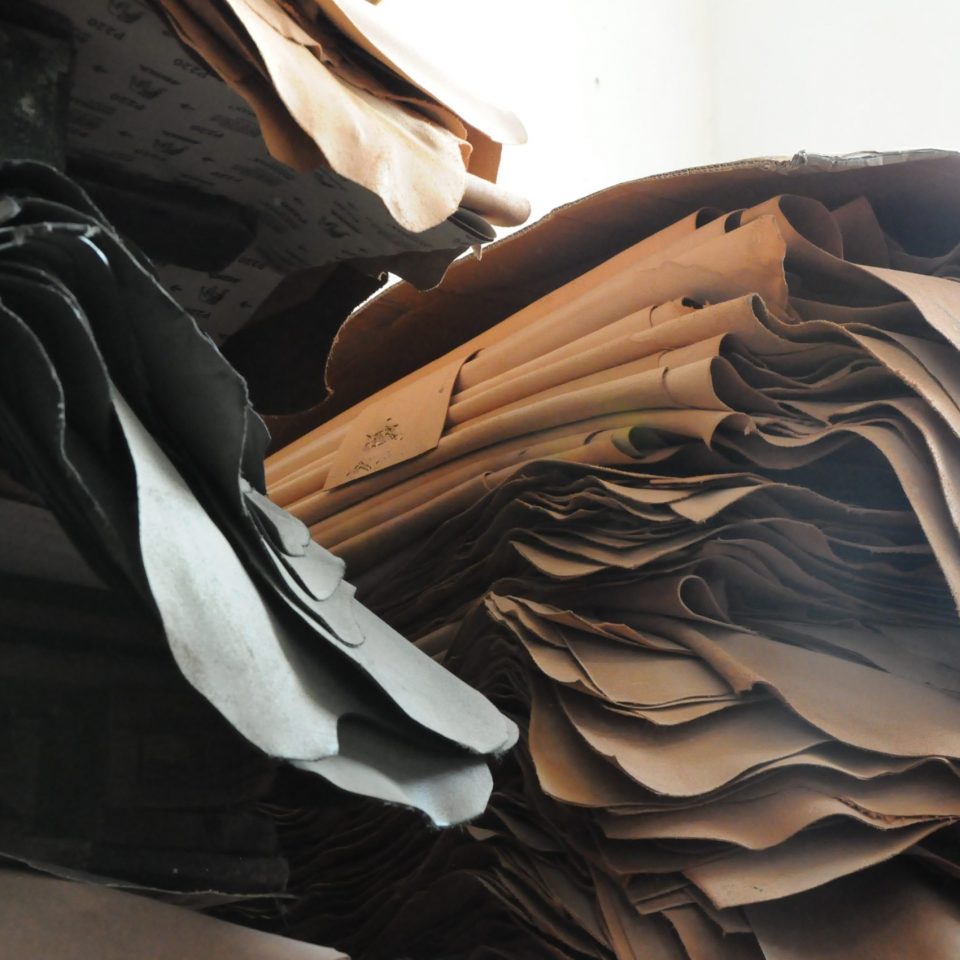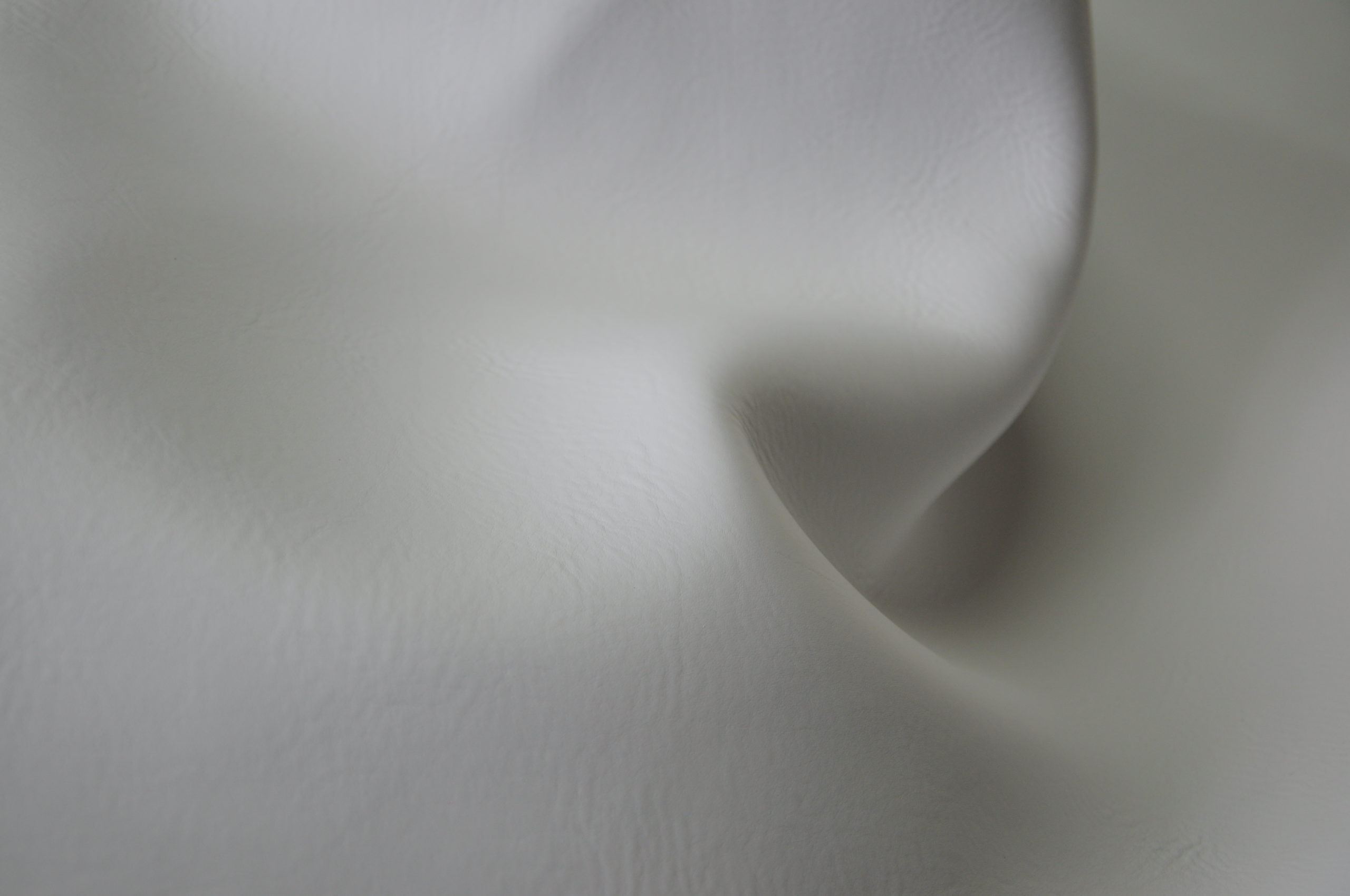TANNING
Tanning involves a series of chemical treatments and mechanical operations that transform the animal skins and hides from raw product into semi-finished product making it more resistant, flexible, durable and stable over time.
The skin is made up of three main layers: the epidermis, the dermis and the subcutaneous layer. The dermis is the layer of the skin that is transformed into leather by the tanning agent. It is made of connective tissue whose main component are collagen fibers.
The dermis contains also elastin that, together with albumins and globulins, has a cementing action and is eliminated as well as fats and water through riviera and mechanical operations.
During the tanning process, the use of acids, bases, salts, enzymes and tanning agents allows to dissolve the fats and non-fibrous proteins naturally present in the skin, and promotes the formation of a chemical bond between collagen fibers and tannins.

VEGETABLE TANNING
It is the most classic and ancient hide tanning process, widespread all over the world. The process is realized in a traditional way, especially in Italy, where expert artisan tanners, heirs to centuries of great experience and knowledge, work high quality hides using innovative technologies.
The main ingredient of vegetable tanning are tannins. They are widely found in the plant kingdom and are extracted from tree bark, wood, fruit and leaves. These extracts give the leather a natural color, with warm tones.
Tradition, innovation, naturalness and beauty
Vegetable tanning is the artisanal process of treating skins and hides that expert tanners have handed down from father to son for over 200 years. It combines ancient recipes, that are closely guarded by their owners, with technological innovation.
The creation of vegetable tanned leather is the expression of art, knowledge, skill and experience. The transformation from raw hides into a durable and valuable material is a process that takes place in barrels made of wood or recyclable plastic material, with respect of the environment.
This process is amazing because it is based on the use of natural tannins, modern technologies and machinery of latest technology, but, above all, on the slow passing of time.
Among the various tanning methods, vegetable tanning is the most classic, traditional, recognizable, natural and ecological. The only one that emphasize the peculiar characteristics of the leather.
Vegetable tanning combines comfort with look, fashion with tradition, uniqueness with the versatility of an item. This process is slowly disappearing in Europe, except for Italy, where the Tuscan Consortium is the world-beater regarding tradition and fashion innovation:
Plant extracts
The raw materials used for vegetable tanning are tannins, natural substances available both in liquid and powder form, extracted from different parts of plants including wood, bark, pods, fruits and leaves.
The most common tannins are obtained from chestnut wood (Castanea sativa), from Quebracho wood (Schinopsis lorentzii), from Tara pods (Caesalpinia spinosa), Catechu (Acacia Catechu), Chinese gall (Rhustyphina semialata), Gambier (Uncaria Gambir ), mimosa or acacia rind (Acacia meamsii), myrobalan (Terminalia chebula), oak wood (Quercus sp), sumac (Rhustyphina coriaria), Turkish gall (Quercus infectoria) and Vallonea (Quercus macrolepis).

WHITE TANNING

Innovation in chrome-free tanning
In the last decade, most tanneries had to deal with all issues related to the environmental impact of the tanning processes and improve the working conditions of their employees in order to be competitive on the global market.
The increasingly restrictive legislation obliges tanneries to continually improve their production activities.
Additionally, the relevant authorities together with consumers are always paying greater attention to the possible presence of harmful and dangerous substances, such as azodyes and hexavalent chromium, in leathers and articles derived therefrom.
The constant monitoring of these products revealed that in some cases the hides contain chromium (VI), although only chromium (III) is usually used in the tanning process. It was therefore concluded that chromium (VI) is formed through the oxidation of chromium (III) during the tanning and re-tanning processes and during transportation of the hides to the factories where subsequent processing takes place and that are all over the world.
In order to avoid this problem, the wet white leather is obtained without the use of chrome and involves the combination of synthetic tannins with vegetable tannins, glutaraldehyde and minerals, such as aluminum and zirconium.
